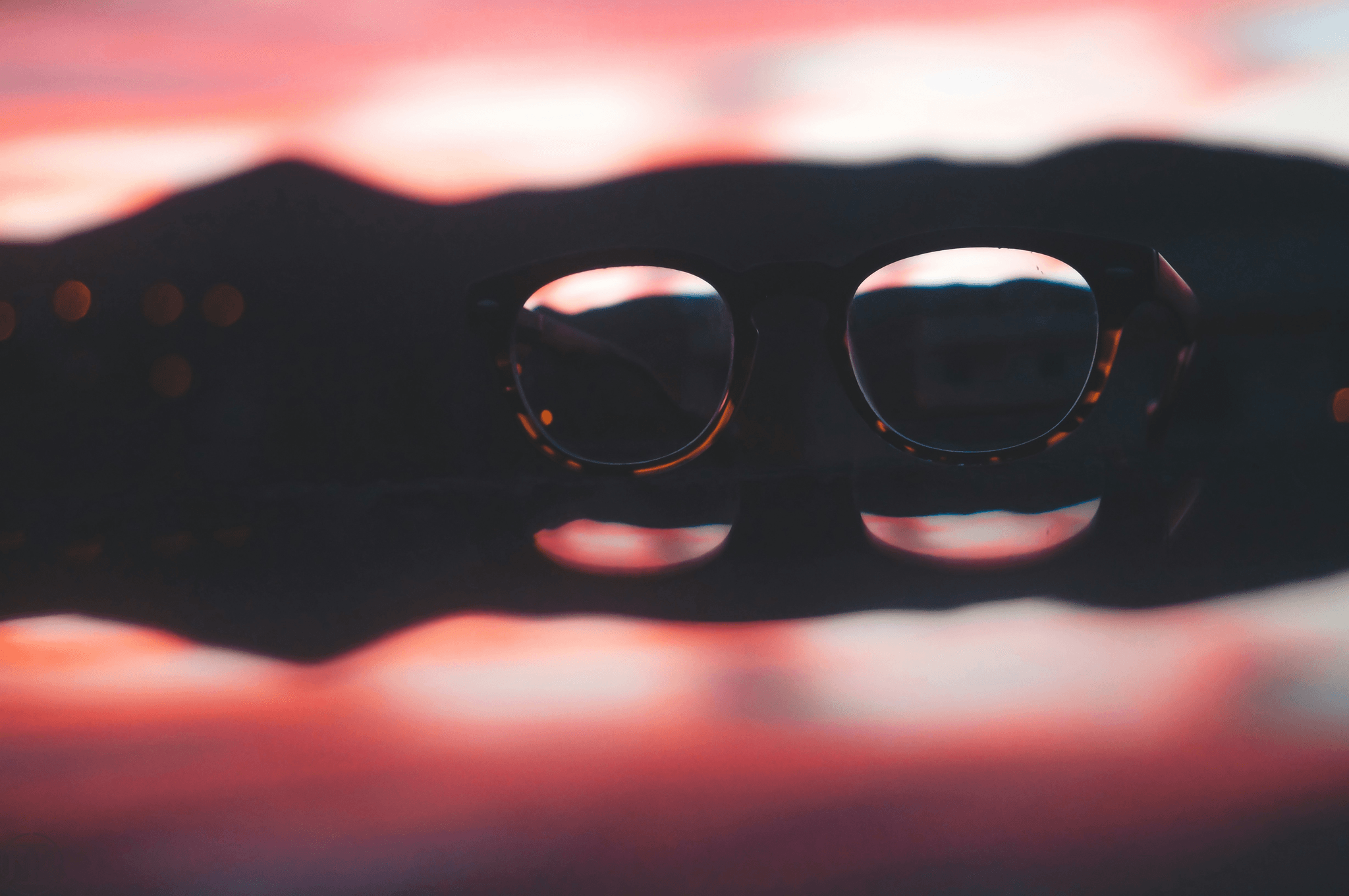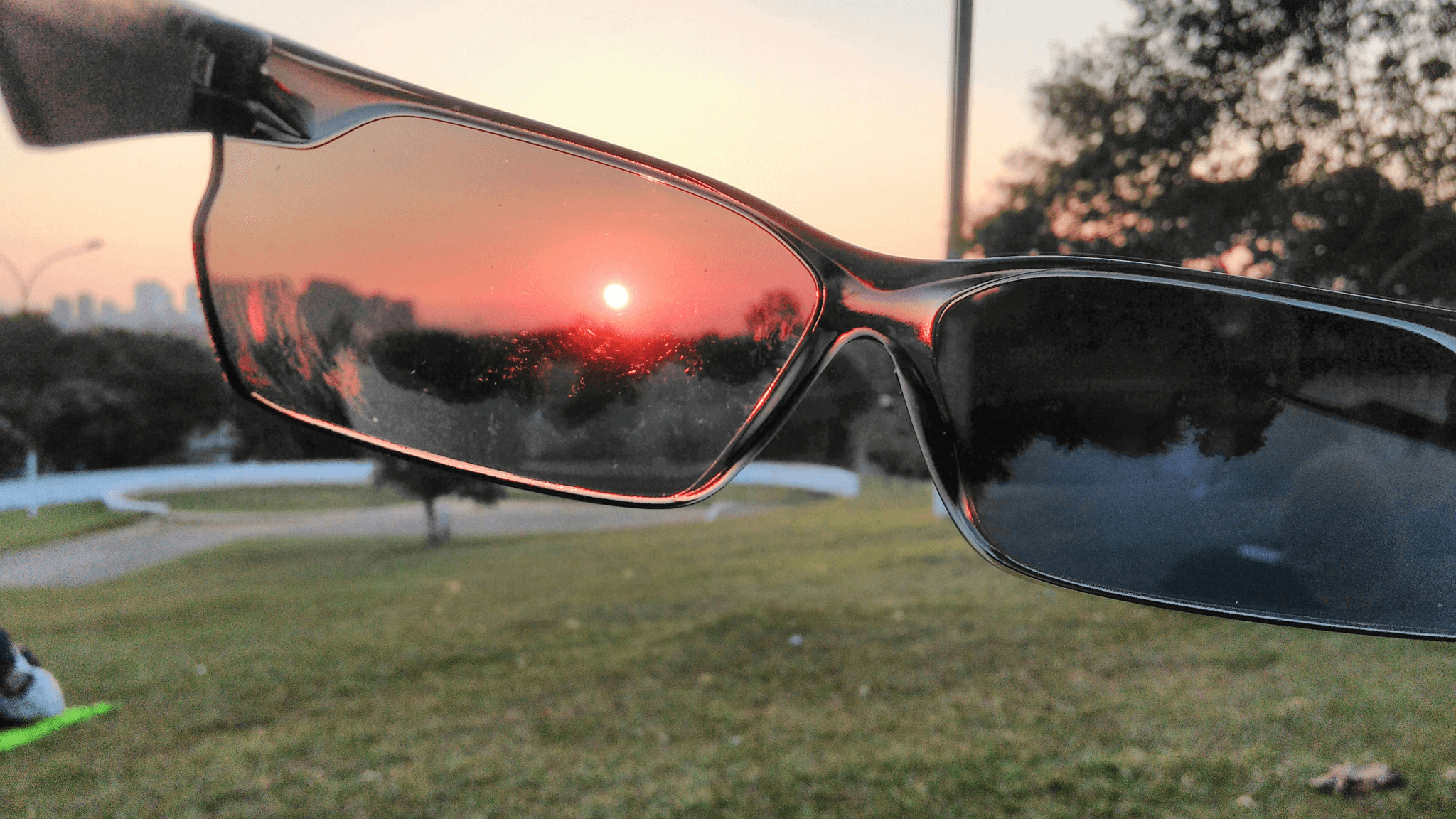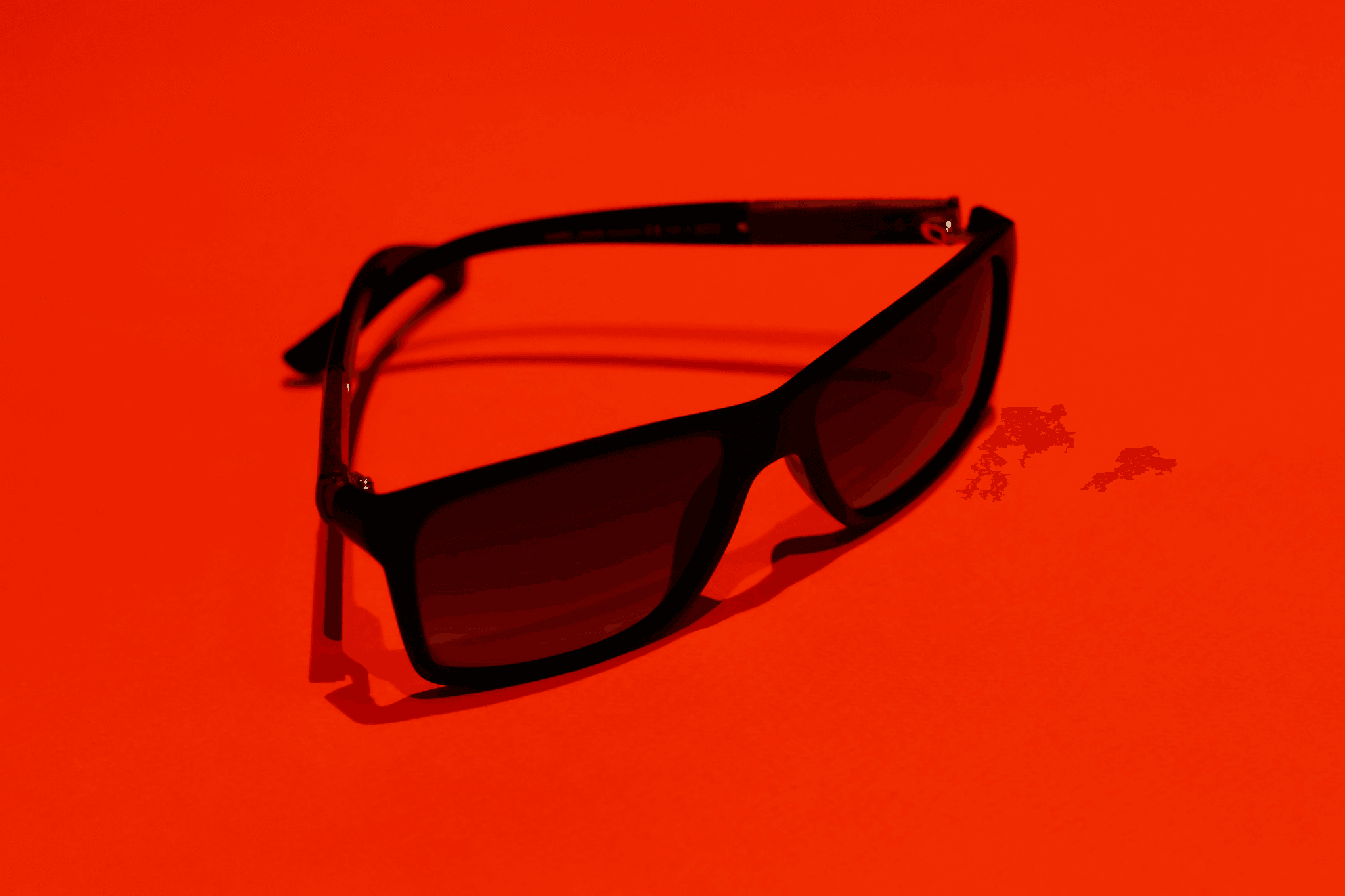Introduction

If you've ever wondered about the **photochromic lenses meaning**, you're not alone. These innovative lenses are designed to adapt to changing light conditions, making them a popular choice for many eyewear users. Understanding how they work and their benefits can help you decide if they're right for you.
Understanding Photochromic Lenses Meaning
Photochromic lenses are special optical lenses that darken in response to sunlight and clear up indoors, providing convenience and comfort. They are often made from glass or plastic that contains photochromic molecules, which react to ultraviolet (UV) light. This unique feature makes them an attractive option for those who frequently transition between indoor and outdoor environments.
The Science Behind Photochromic Functionality
The science behind photochromic functionality is fascinating, involving a chemical reaction triggered by UV rays. When exposed to sunlight, the molecules within the lens undergo a transformation that causes them to absorb more light, leading to darkening of the lens surface. Once indoors or away from UV exposure, these molecules revert back to their original state, allowing the lenses to clear up again—making them incredibly versatile.
Benefits of Choosing Photochromic Glasses
Choosing photochromic glasses comes with numerous benefits that enhance your visual experience while protecting your eyes. One of the primary advantages is eye protection; they block harmful UV rays effectively, reducing risks associated with prolonged sun exposure—so you might wonder, **is photochromic lens good for eyes?** Additionally, they offer comfort by reducing glare and minimizing eye strain during bright conditions. With all these features combined, it's easy to see why many people prefer photochromic over traditional sunglasses or even ask themselves: **is photochromic better than polarized?**
What Are Photochromic Lenses?

Photochromic lenses are a type of eyewear that automatically adjusts to changing light conditions, offering both convenience and protection. They are designed to darken in bright sunlight and return to a clear state indoors, making them an ideal choice for those who frequently transition between different lighting environments. Understanding the photochromic lenses meaning is crucial for anyone considering these innovative glasses.
Definition and Key Characteristics
At their core, photochromic lenses are optical lenses that contain special compounds that react to ultraviolet (UV) rays from the sun. When exposed to UV light, these lenses undergo a chemical reaction that causes them to darken, providing effective eye protection from harmful rays. Key characteristics of photochromic lenses include their ability to adapt quickly to changes in light intensity and their capacity for blocking 100% of UV radiation, which raises the question: Is photochromic lens good for eyes? The answer leans heavily towards yes, as they not only shield your eyes but also enhance visual comfort.
How They Change with Light
The transformation of photochromic lenses is all about chemistry and physics working in tandem. When you step outside into the sunlight, UV rays trigger the molecules within the lens material, causing them to expand and absorb more light—hence why they darken so effectively. Conversely, when you return indoors or into shaded areas where UV exposure diminishes, these molecules contract back into their original state, allowing the lenses to clear up again swiftly—an impressive feat that showcases why many opt for photochromic glasses benefits over traditional sunglasses.
Popular Brands and Options
Several brands have made a name for themselves in the world of photochromic lenses, each offering unique features tailored to various lifestyles and preferences. Well-known options include Transitions® Optical's line of adaptive lenses which are popular among everyday users seeking convenience without sacrificing style; Ray-Ban also offers stylish frames with photochromic options that appeal particularly to fashion-conscious consumers looking for versatility in eyewear choices. This variety begs another question: Is photochromic better than polarized? It really depends on individual needs; while polarized lenses excel at reducing glare from surfaces like water or roads, photochromics adapt seamlessly across varying light conditions.
Are Photochromic Lenses Good for Your Eyes?

When considering whether photochromic lenses are good for your eyes, many factors come into play. These innovative lenses offer a unique blend of convenience and protection, making them an appealing choice for many eyewear users. But the question remains: Is a photochromic lens good for eyes? Let's dive deeper to find out!
Eye Protection from UV Rays
One of the standout features of photochromic lenses is their ability to block harmful UV rays. When exposed to sunlight, these lenses darken, effectively shielding your eyes from both UVA and UVB radiation—two culprits linked to various eye conditions like cataracts and macular degeneration. This eye protection is a significant advantage that highlights the photochromic glasses benefits, particularly for those who spend extended periods outdoors.
Moreover, while traditional sunglasses provide UV protection, they often require switching between different pairs of glasses depending on light conditions. With photochromic lenses, you get seamless transitions that adapt as your environment changes, ensuring consistent safety against harmful rays throughout your daily activities. It’s clear that understanding the photochromic lenses meaning goes beyond aesthetics; it’s about safeguarding your vision.
Comfort and Reduced Eye Strain
In addition to their protective qualities, photochromic lenses offer comfort that can significantly reduce eye strain—a common issue in our screen-dominated lives. The adaptive nature of these lenses means they adjust to varying light conditions automatically, allowing your eyes to relax without constantly squinting or adjusting focus due to glare or brightness shifts. This feature makes them particularly appealing for individuals who frequently transition between indoor and outdoor environments.
Furthermore, by filtering out blue light emitted from screens and harsh lighting sources indoors, these lenses can help alleviate discomfort associated with prolonged digital device usage. As more people ask what are the disadvantages of photochromic lenses?, it’s essential to note that while some may experience slower response times in certain lighting conditions (like driving at night), the overall comfort they provide often outweighs this minor drawback.
Medical Opinions and Research Findings
Medical professionals largely support the use of photochromic lenses due to their multifaceted benefits for eye health. Research indicates that consistently wearing these adaptive glasses can lead to lower rates of eye strain complaints among users compared to those who rely solely on regular prescription eyewear or traditional sunglasses in bright environments. Consequently, many optometrists recommend incorporating them into daily routines as a proactive measure against potential vision issues.
However, individual experiences may vary based on specific lifestyles and environmental factors—hence why some might wonder if photochromic is better than polarized options in particular situations like fishing or driving under glaring sunlight. Ultimately, understanding how long do photochromic lenses last can also influence user satisfaction; with proper care and maintenance (which we'll cover later), they can serve you well over time without compromising quality.
Disadvantages of Photochromic Lenses

While photochromic lenses offer numerous benefits, they are not without their drawbacks. Understanding these disadvantages can be crucial when deciding whether to invest in photochromic glasses. So, let's dive into the nitty-gritty of what you might want to consider before making a purchase.
Limitations in Certain Environments
One significant limitation of photochromic lenses is their performance in specific environments. For instance, while they work well outdoors under sunlight, they may not darken effectively inside vehicles due to UV-blocking windshields. This raises the question: Is photochromic lens good for eyes? While they provide UV protection outdoors, their effectiveness can diminish in shaded or indoor settings, leaving your eyes vulnerable.
Another limitation is that photochromic lenses may not react well to all types of light sources. Fluorescent lighting and certain artificial lights do not trigger the same response as natural sunlight does. Therefore, if you spend a lot of time indoors or under these lighting conditions, you might find that the benefits of photochromic glasses are less pronounced.
Response Time and Effectiveness
The response time can vary significantly; while some lenses darken almost instantly in bright light, others may take longer than expected to return to their clear state once indoors. This delay can be inconvenient and could lead one to wonder: How long do photochromic lenses last? The answer isn't just about durability but also about how effectively they adapt over time.
Furthermore, the effectiveness of these lenses can diminish with age or prolonged exposure to UV light. Over time, you may notice that your once-vibrant photochromic glasses aren't quite as responsive as they used to be—another consideration when weighing the pros and cons of these innovative lenses.
Photochromic vs Polarized: Key Differences
When deciding between photochromic and polarized options, it's essential to understand their distinct functionalities and advantages. Photochromic lenses change tint based on UV exposure but do not reduce glare from reflective surfaces like water or roads—this is where polarized lenses shine (pun intended). So if you're asking yourself: Is photochromic better than polarized? The answer largely depends on your lifestyle and specific needs.
In situations where glare reduction is paramount—like fishing trips or driving during sunny days—polarized sunglasses might be more beneficial than standard photochromics alone. However, if you're looking for versatility across various light conditions without switching glasses constantly, then investing in quality photochromics could still serve you well despite their limitations.
In conclusion, while there are several disadvantages associated with photochromic lenses meaning—from environmental limitations and response times to comparing them against polarized alternatives—their unique benefits shouldn't be overlooked either.
How Long Do Photochromic Lenses Last?

When considering photochromic lenses, many people wonder, How long do photochromic lenses last? The lifespan of these innovative lenses can vary based on several factors. Generally, photochromic lenses are designed to endure for several years, often lasting anywhere from 2 to 5 years before they need replacement.
Lifespan of Photochromic Lenses
The longevity of photochromic lenses is influenced by their material and the frequency of use. High-quality photochromic glasses can maintain their functionality for a longer period, while cheaper alternatives may fade faster. Users should keep in mind that regular wear and exposure to various environmental conditions can also affect how long these lenses last.
Factors Affecting Durability
Several factors play a role in determining how long your photochromic lenses will remain effective. One significant factor is the lens material; polycarbonate and high-index plastic tend to be more durable than standard plastic options. Additionally, exposure to extreme temperatures and prolonged direct sunlight can accelerate wear and tear—so if you're frequently outdoors, you might find yourself asking, What are the disadvantages of photochromic lenses?
Proper Care and Maintenance Tips
To maximize the lifespan of your photochromic glasses benefits, proper care is essential. Always store your glasses in a protective case when not in use and clean them with a microfiber cloth to avoid scratches that could impair functionality. Regular maintenance not only helps maintain clarity but also ensures that your lenses continue performing well over time—keeping you stylish while protecting your eyes from harmful UV rays.
Comparing Photochromic vs Polarized Lenses

When it comes to choosing the right eyewear, understanding the differences between photochromic and polarized lenses is crucial. Both types offer unique benefits, but knowing which one suits your needs best can enhance your overall experience. So let's dive into the overview of polarized lens benefits first.
Overview of Polarized Lens Benefits
Polarized lenses are designed to reduce glare from reflective surfaces like water, roads, and snow, making them a favorite among outdoor enthusiasts. This feature significantly enhances visual clarity and reduces eye strain in bright conditions—perfect for activities like fishing or skiing. Additionally, polarized lenses often provide UV protection, further safeguarding your eyes from harmful rays while enjoying the great outdoors.
Situational Advantages of Each Type
While both photochromic and polarized lenses have their merits, they shine in different environments. Photochromic lenses adjust to changing light conditions, making them versatile for indoor and outdoor use; you get a seamless transition without needing to switch glasses constantly. On the other hand, if you find yourself frequently exposed to direct sunlight or reflective surfaces—like at the beach or while driving—polarized lenses may be more beneficial due to their glare-reducing properties.
Which is Better for Your Lifestyle?
Determining whether photochromic is better than polarized relies heavily on your lifestyle choices and daily activities. If you often move between indoor and outdoor settings, photochromic glasses benefits such as adaptability might be more appealing; they offer convenience without compromising on eye protection—after all, is photochromic lens good for eyes? However, if you're an avid sports enthusiast or spend significant time outdoors in bright conditions, investing in polarized lenses could enhance your visual comfort significantly. Ultimately, both options have their place; it’s about finding which aligns with your needs best.
Conclusion
In summary, understanding the **photochromic lenses meaning** is essential for making informed choices about eyewear. These innovative lenses adapt to changing light conditions, providing comfort and protection for your eyes. Whether you're considering their benefits or weighing the disadvantages, photochromic lenses offer a versatile solution for many lifestyles.
Key Takeaways on Photochromic Lenses Meaning
To grasp the **photochromic lenses meaning**, it's crucial to recognize that these lenses automatically darken in sunlight and lighten indoors. This adaptive technology not only enhances visual comfort but also protects against harmful UV rays, making them a popular choice among eyewear enthusiasts. Ultimately, photochromic lenses represent a blend of convenience and eye care that caters to modern needs.
Final Thoughts on Photochromic Glasses Benefits
The **photochromic glasses benefits** are numerous; they provide exceptional eye protection while reducing glare and strain in varying light conditions. Many users find them helpful in maintaining comfort throughout their daily activities, from driving to outdoor sports. However, it’s important to consider factors like response time and environmental limitations when deciding if they’re right for you.
When to Choose Daposi’s Sunglasses for Style and Protection
When selecting sunglasses that combine style with functionality, Daposi’s offerings stand out as an excellent choice. Their designs incorporate advanced photochromic technology while ensuring you look fashionable during any outing. If you're looking for sunglasses that deliver both aesthetic appeal and effective UV protection, choosing Daposi's ensures you're covered in every sense—because who says you can't have style along with safety?
